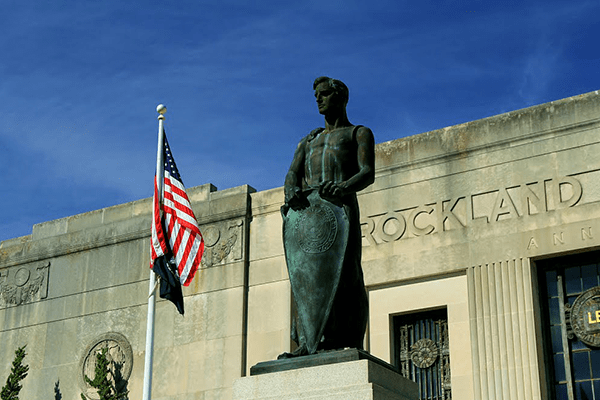|
RCBJ-Audible (Listen For Free)
|
Amy Puerto’s Decision To Uphold Gerrymandered Map Hinges On Faulty Notion That A Clarkstown Ward Can Support More Than One Councilmember To Represent Constituents
By Tina Traster
A judge has rejected an effort to have a gerrymandered town map declared illegal but her decision may have turned on a faulty premise.
Judge Amy Puerto of Rockland County Supreme Court in a ruling today said the adoption of the redistricting map approved by the Town Board by a 3-2 vote last month stands because the petitioners failed to prove that the map was illegal. Councilmen Patrick Carroll and Frank Borelli had claimed that the adopted map violated municipal home rule law by pushing two incumbents against each other into one ward. However, the judge relied on a representation in a filing by Deputy Town Attorney Kevin Conway that said “placing two council members in one ward does not negatively impact either of them as there is no limitation on the number of councilmen per ward.”
Conway swore to this statement in his “Affirmation In Support Of A Motion To dismiss” the case filed with the Court on March 3.
This assertion, which went unchallenged by the petitioners, allowed Puerto to conclude that the new map did not disadvantage the incumbents. It is clear that Clarkstown Town Law does not allow for more than one councilman in any ward, and that the judge’s underlying logic is faulty. There can only be one councilman per ward.
“The legislative intent, as evidenced by the March 2017 town board minutes, clearly states that when Clarkstown passed the ward map, one resident of each ward would represent that particular ward,” said Carroll. “Clearly there’s been a disconnect between what Clarkstown has done and how Puerto has viewed it. We’re exploring our options to clarify this issue for the judge though we know the nominating petition deadline is looming.”
The Judge also gave deference to the town council’s 3-2 vote to adopt the map, as well as a finding that the map “substantially complies,” with the law, and that Skyline Consulting, which drew the map, did so in accordance with municipal home rule law.
It is clear that Clarkstown Town Law does not allow for more than one councilman in any ward, and that the judge’s underlying logic is faulty. There can only be one councilman per ward.
In dismissing the case, the court found “the aggrieved harm and alleged disfavor” claimed by the petitioners were “unsupported and based on speculation and conclusory statements,” and that Petitioners failed to show a sound legal theory. Petitioners had argued that the map was adopted in retaliation for their opposition to Supervisor George Hoehmann’s efforts to repeal the town’s term limits law. The court found no evidence supporting that claim.
The decision comes on the heels of another monumental decision last week from the same judge that kept Clarkstown’s term limits in place. In that decision, Puerto focused her ruling on the premise that the claims brought by Hoehmann and Councilman Don Franchino to eliminate term limits were time-barred by the statute of limitations.
Further, the judge in her ruling on redistricting made no mention of the petitioners’ complaint that the district comprising Central Nyack, Clarkstown’s most racially diverse community, was cleaved in two and harmed by the adoption of the map because residents would now have to rely on two separate advocates.
Candidates have been knocking on doors to collect petition signatures for the Nov. 2023 election. The deadline to collect signatures is April 6.
In essence, the judge’s earlier decision to uphold the town’s term limits law meant that Borelli could not run again for council as a councilman in Ward 1, or even Ward 4, because he’s barred by term limits. He could, however, run for town supervisor but by many accounts he is not interested in the job.
Hoehmann’s eight-years in office preclude him from being able to run again for town supervisor. Franchino is not term-limited for the 2023 election and can run again in his ward.
The petitioners in the lawsuit had also claimed the redistricting was unnecessary because the original districts were compliant with the law. They said the map was illegal because it “discourages competition” or was drawn “for the purposes of favoring or disfavoring incumbents or other particular candidates or political parties.” Drawing and approving a map that forces two incumbents into the same ward runs afoul of the law.
The suit also said the gerrymandering of the map undermines the African-American community in Central Nyack by splitting its population into two wards, “thereby resulting in a retrogression of the impact of this minority’s community vote.”
Residents of Central Nyack had expressed anger and objection over the recently adopted redistricting map because it would have carved their population in half.
Roughly 30 residents responded to a survey sent by email and distributed on social media by the Central Nyack Civic Association that asked: “Do you agree with the Town of Clarkstown dividing our community into two separately legislated wards?” Respondents unanimously, and anonymously, said no, elaborating that they resented the endeavor to split their population.











